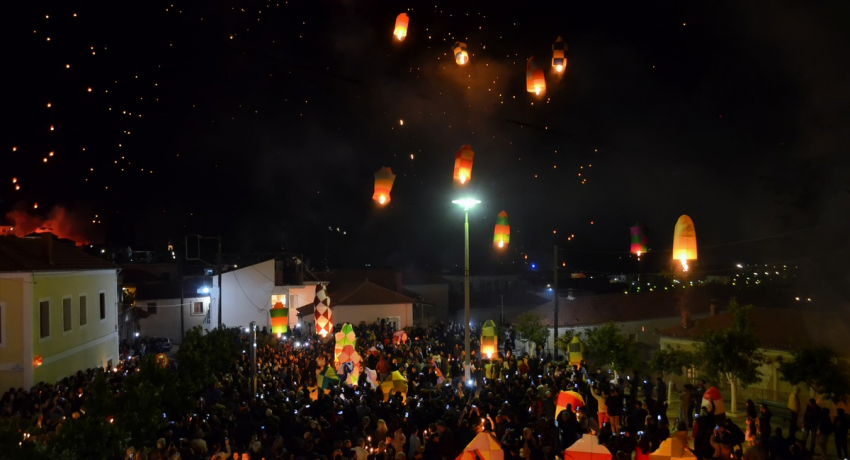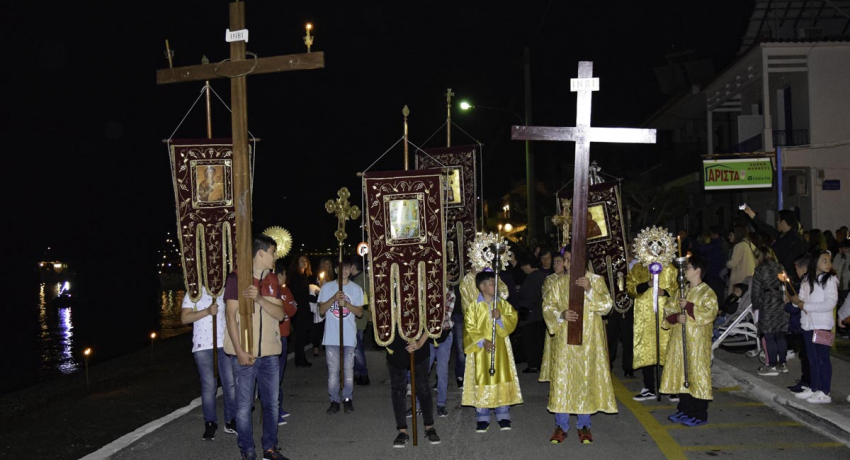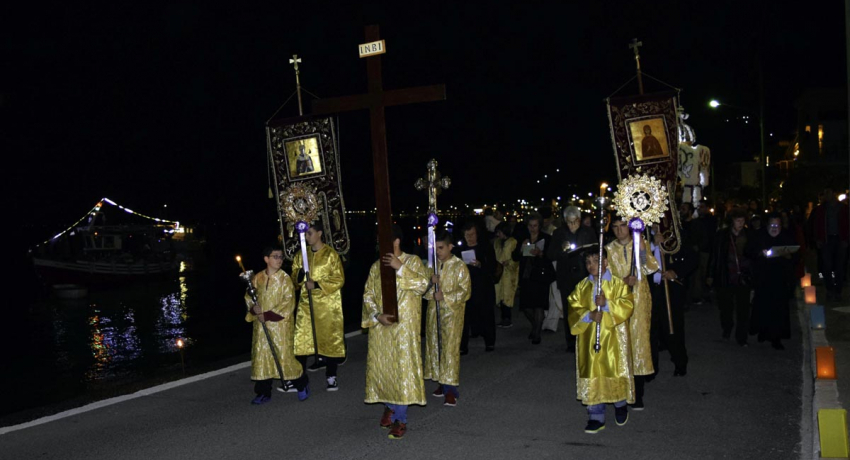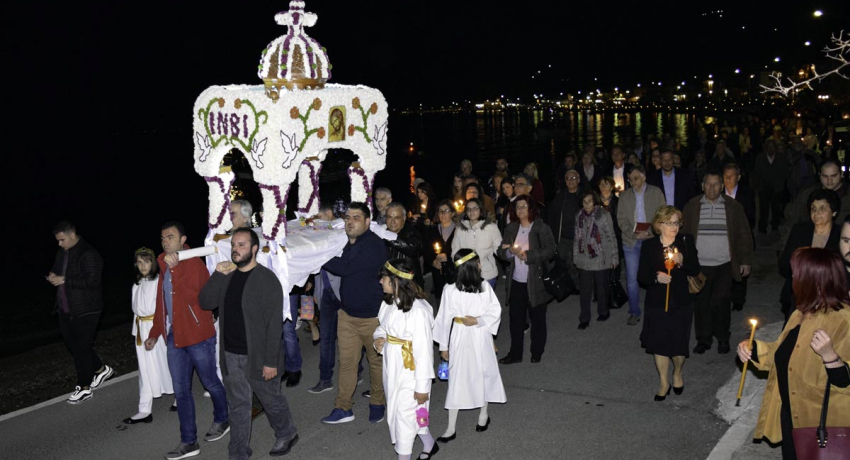The most prolific chronographer, journalist and playwright Dimitris Psathas, a lover of Leonidion, wrote: “… Carnival in Patras, Easter only in Leonidion”.
The gardens of the houses and the orchards of Prastos, the city of Prasiai or Vrasiai as known in the past, in the heart of Spring are strewn with violets, lilacs, lilies and roses that the inhabitants cultivate with care to decorate the epitaphs of the five parishes of Leonidion. Epitaph’s flowers are called Cristoloulouda or Stavroloulouda, that is, Christ’s flowers or Crossflowers and they are believed to possess miraculous power.
Women and girls on Good Thursday’s morning knit wreaths and crosses to decorate the epitaphs of Good Friday. The night after Christ’s crucifixion, they will remain in the church to spend the night, mourning incessantly each one thinking of their own dead. On Good Friday’s morning after the Deposition, the church’s bells ring mournfully throughout the day, a day of utter lament for Orthodox Christianity. Women do not do any housework, avoiding even cooking. On Good Friday’s evening as the divine drama climaxes, the epitaphs will perform a magical procession in the neighborhoods of Leonidion to the sounds of the mournful music of the Philharmonic of the Municipality of South Kynouria, deafening crackers and dynamites. They will gather in Heroe’s square and the faithful chanting sad hymns. From there, every epitaph will return to its parish. Housewives light candles and burn incense on the balconies of their houses as the procession of the epitaph passes by. An excellent housewife from Leonidion many years ago had the inspiration to carve orange lanterns and illuminate her neighborhood and her parish. The lanterns created a spectacular image in this mourning night; the place was full of frankincense and orange. Mrs Aggelika Chiotis, (maiden name Poutsela), mother of five children, a modern heroine, was the pioneer of this original idea. She started in 1990 for the first time making 2.000 oranges on her own. Her idea was applauded and loved by everyone. The following year it was copied in other neighborhoods, so that today the whole central market, the traditional alleys of Leonidion and the neighborhoods around the churches are illuminated with thousands of lanterns which volunteers under the auspices of various organizations prepare a month before Easter by keeping them in the freezer. Volunteers also undertake to place them and light them about an hour before the procession of the epitaphs. The fruits that are mainly used are citrus oranges. About 10,000 fruits are used.
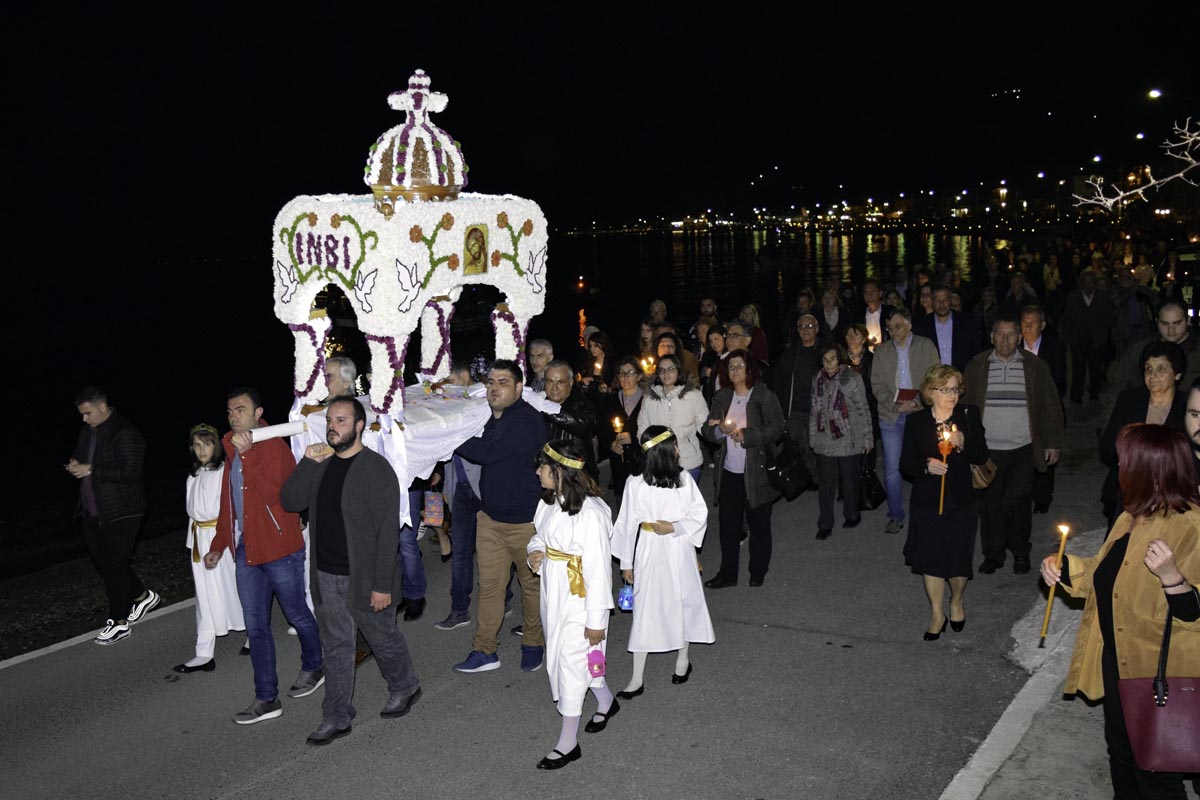
The procession of the epitaph in Tyros is overwhelming and special. The procession of the epitaphs of the two perishes runs along the entire coastal road. The gathering crowd chant hymns, while boats and fishing boats with lighted torches accompany the procession. The place vibrates with crackers and sparklers.
However, those who seek for absolute immersion and inner search, may attend the Services in the picturesque villages of the area, without crowds, noise and cameras and of course in the monasteries of the region, Virgin Mary’s Elona’s, saint Nikolaos Syntzas and saint Nikolas of Karya.
The climax, however, of the Ester preparations for the resident of Leonidion is the construction of balloons. Young and old, with absolute devotion and worship, indulge months before Easter in constructing these Eastern “lanterns”, a custom that has its origins in the far East and came to Leonidion by the world travelling sailors of Tsakonia around the end of the 19th - early 20th century. Its construction requires art and passion. Sixteen thin pieces of light paper, rice paper, are joined and a thin round rod is tied to their base. A cross wire is tied to the rod and on the “kollemara” a cloth soaked with oil and olive oil, is inserted exactly at the cross of the union. To lift the balloons they hold them over a fire, the cloth lights up, the balloon fills with hot air and is released into the sky. On Holy Saturday’s night everything is ready for Christ Resurrected. Men and children light fires outside the temples. The parish competition has been going on for many years. Which church will first ring the bells joyfully for Christ has raised, which parish will fly the first balloon or which parish will fly more balloons than the others. Enthusiasm and sacred emotion are indescribable. Hundreds of colorful balloons send the message of the Resurrection of Christ to the fragrant spring night sky of Leonidion offering a unique spectacle. It is estimated that each parish leaves around 100-150 balloons. The bells ring joyfully, everywhere on the lips of the believers ‘’Christ is risen’’, the hearts are filled with joy and hope; together with the Resurrection of the Lord they await their own redemption, their own Resurrection.
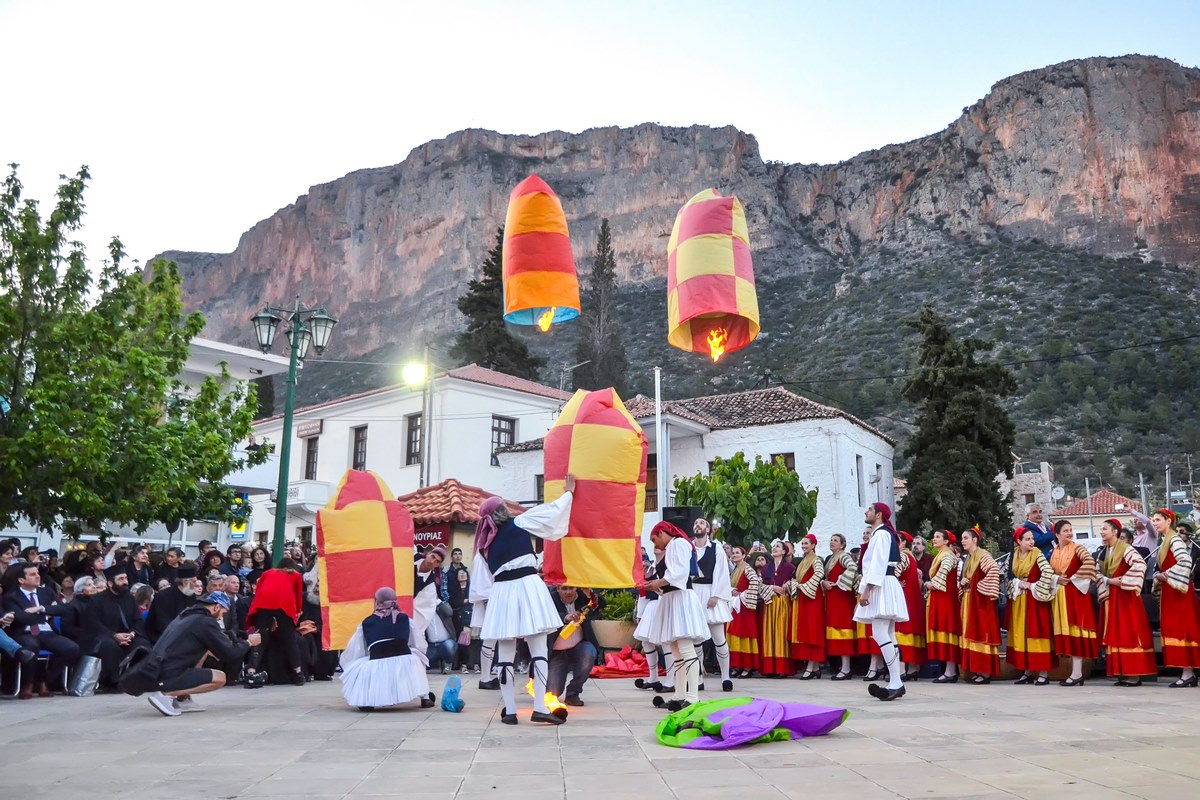
On Easter’s day in the municipal district of Leonidion, the mayor of South Kynouria welcomes and exchanges the joyful message of the day with residents and visitors in the park behind the old town hall where the Municipality Library is housed.
In the morning and till late noon municipal officials bake lambs, serve wine, delicacies and the traditional eastern bun and red egg to all people under the sounds of traditional folklore music in a very festive atmosphere.
In the afternoon of the same day, the Feast of Love takes place. Residents and visitors have the opportunity to hear the gospel in the Tsakonian dialect and enjoy the music and dance performance of the Leonidion dance club to the sounds of the Dalianis family. The members of the association with the traditional costumes cross the whole main street of the market of Leonidion singing traditional Tsakonian songs, they will end up in the square of 25th of March to dance the local folklore dances, the Tsakonian dance, or closed dance, the Tsakonian ballos, Kalamatianos and Tsamiko. After the end of the dance performance, locals and visitors are treated with delicious ‘’depless’’, a traditional sweet, and the party ends with a lot of dance until late at night.
Similarly, the Feast of Love is celebrated with dancing and traditional songs in Tyros and Melana Kynourias.
‘’Κollema’’, (noun), in Tsakonian dialect, is called the cloth, ‘’Kollemara’’ is the big cloth, Dictionary of the Tsakonian Dialect, Thanassis Kostakis, volume B΄, p.91, Athen’s Academy, Athens: 1986.

